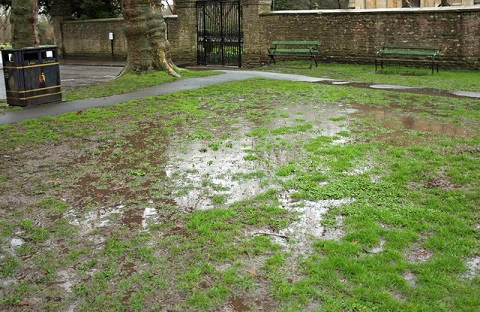
As autumn’s colorful leaves blanket the ground and the air turns crisp, homeowners often shift their attention from summer landscaping to winter preparedness. Yet, the transitional season brings a subtle challenge often overlooked until it becomes a pressing concern: yard drainage. The combination of increased rainfall, fallen leaves, and cooler temperatures creates unique conditions that can compromise even the most well-kept landscapes. Addressing yard drainage issues in the fall is not just a matter of aesthetics; it’s essential for protecting your property, preserving your garden’s health, and preventing costly structural damage.
With autumn come frequent rains and the steady shedding of leaves, both of which can wreak havoc on your yard’s natural drainage system. The ground, often still saturated from summer storms or compacted by the season’s activity, may struggle to absorb excess water. Mulched flower beds, sloping lawns, clogged gutters, and blocked drains all contribute to a perfect storm of potential problems.

Waterlogged lawns are more than just an inconvenience. Standing water can suffocate grass roots, encourage fungal growth, erode soil, and eventually lead to basement leaks or foundation issues if left unchecked. Thus, understanding the root causes and solutions for poor drainage is vital for every homeowner as fall settles in.
Common causes of fall drainage issues include:

- Leaf Accumulation: One of the hallmarks of fall is the picturesque carpet of leaves. However, when left to accumulate, leaves can quickly clog gutters, downspouts, and surface drains, redirecting water where you least want it—pooling around your home’s foundation or in low-lying areas of the yard.
- Soil Compaction: Summer activities and heavy foot traffic can compact soil, reducing its ability to absorb water. As the rains return, water simply runs off rather than soaking in, often pooling in depressions or flowing toward the house.
- Poor Grading: Yards that lack a proper slope away from buildings are especially vulnerable in the fall. Gravity draws excess water toward your home, increasing the risk of leaks and erosion as rain intensifies and leaves block natural drainage paths.
- Lack of Effective Drainage Infrastructure: Many homes need drainage systems—such as dry wells, French drains, or swales and drain fields that are equipped to handle autumn’s increased water load. Older homes may have systems that are outdated and no longer effective.
Detecting drainage issues early can save hours of work and thousands of dollars in repairs. Here’s what took for as you inspect your property this fall:
- Puddling and Standing Water: After a rainfall, check for areas where water lingers for more than 24 hours. These spots are prime indicators of poor drainage.
- Moss or Fungus Growth: Persistent moisture encourages moss, mushrooms, and algae, particularly in shaded areas—natural warning signs of water that isn’t moving as it should.
- Soil Erosion: Water that consistently flows along the same path will whisk away topsoil and mulch, carving unsightly gullies and exposing plant roots.
- Crawl Space Dampness: Moisture in your crawl space during or after heavy rains is a red flag that exterior drainage needs attention.

Resolving drainage issues is most effective when preventive measures are taken before problems become severe. Incorporating improved drainage solutions into fall lawn care routines ensures a more resilient landscape come wintertime. Additionally, ongoing maintenance—like periodic inspection of gutters and drains, regular aeration, and seasonal leaf management—will reduce the need for major interventions later.
It’s also wise to keep records or photographs of recurring trouble spots. This not only helps in diagnosing ongoing issues but can be invaluable if you need to enlist professional help.
Some drainage problems extend beyond the reach of DIY fixes. If you experience repeated pooling or flooding, major soil erosion, or your drainage solutions aren’t resolving the issue, it’s time to consult with a landscaping drainage specialist. They can assess your property’s unique topography and recommend comprehensive solutions, such as sub-surface drainage systems, regrading, or waterproofing.
Fall brings both beauty and challenges to the home landscape. By anticipating and addressing yard drainage issues during this critical season, you safeguard not only the health of your garden but also the integrity of your home. Through regular maintenance, strategic upgrades, and a little seasonal vigilance, you can enjoy autumn’s splendor without the unwelcome surprise of soggy lawns and waterlogged foundations. A dry, vibrant yard is the perfect foundation for winter’s quiet rest and spring’s renewal.
